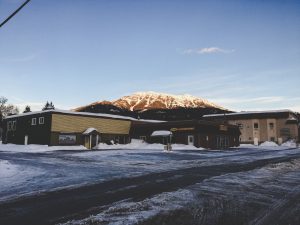Rural Community Resilience

The concept of rural resilience has gained much prominence as a response to the challenges rural communities have faced in recent decades.38 As aforementioned, many of these challenges have been exacerbated by the impacts of climate change. Resilience of these communities is determined by their capacity to readjust to disturbances and retain the same basic function, structure, identity, and feedback.38 Often, the extent of these disturbances are determined by differences within each community that contribute to the overall homogeneity of rural communities. Thus, resilience becomes a very multifaceted concept that can be gained in diverse ways. Interestingly, the diversity of these communities is inherently both helping and hindering. While this heterogeneity allows for diverse solutions, it can also create unique challenges in the identification of areas lacking support in resilience.
Rural areas in BC face many unique and specific challenges. Because these areas rely largely on natural resource-based industries, such as viticulture in the Okanagan, they are highly vulnerable to the effects of climate change.39 The context in which rural communities are shaped causes them to be inextricably connected with their surrounding landscapes, meaning these communities are shaped in both economic and social organization by the outlying natural environment.
Promote education and relationship building to strengthen the resilience of rural communities
In order to address specific challenges, it is important to understand the complexity of each community. Thus, to address these challenges, researchers have attempted to define specific elements that remain crucial for the success of rural resilience. A review of the literature has allowed for the identification of two specific elements: (1) regional specialization; and (2) the regional ability to transform.40
Regional Specialization
Regional specialization occurs in accordance with a community’s natural landscape. In a rural context, regional specialization takes the form of either agro-clusters (agricultural land use) or rural service clusters (agro-tourism or nature reserves).40 These different clusters require different types of landscapes, illustrating how a region’s specialization is inherently linked with the surrounding natural world. As such, these landscapes determine and influence the multiple realms of resilience, including ecological system, economic structure, and cultural domains.40
The Regional Ability to Transform
Crucial for rural resilience is a system’s ability to adapt to external disturbances; or in other words, the regional ability to transform. For a community to thrive over a long period of time, it is essential that resilience emphasizes the ability to transform along with shifting paradigms.40 Along with this, each community must be able to change with its specific specialization. For example, a community that relies heavily on agriculture as its primary service must change in a direction that emphasizes building agricultural resilience in the event of future disruptions.
These key elements, along with the contribution of the natural heterogeneity of rural communities, contribute extensively to the multifaceted nature of building resilience. Essentially, understanding the contribution of these elements in future paradigm shifts will work to enhance rural community resilience in the face of disruption.
Dr. Caroline Shooner discusses her ideas to build resilience to climate change in Haida Gwaii (2:10)
Resilience in Rural Healthcare
The COVID-19 pandemic made obvious the inability of healthcare systems within Canada, and across the world, to cope with large-scale ecosystem disruptions. As infection rates rose exponentially, flooding hospitals, primary-care workers and politicians alike scrambled to prevent a total collapse of healthcare systems. Each new wave of the COVID-19 pandemic led to shortages of personal protective equipment such as masks or gloves, a lack of ventilators, and decrease in the number of available ICU beds. Further, as cases increased, so did the number of primary-care workers facing infection as well as burnout – leading to a shortage of care-givers. As the grip of the COVID-19 pandemic eases in Canada, healthcare workers, policy makers, and citizens are advocating for system change in order to build a healthcare system that will be more resilient to large-scale ecosystem disruptions of all kinds in the future.

Resilience in the context of healthcare can be defined as “the capacity to adapt to challenges and changes at different system levels, to maintain high quality care [and patient safety].”41 Scholars Barnard et. al. add that, “The capacity of a system to recover and adapt to disruption is an essential component of health system resilience, whereby healthcare practitioners and infrastructure are compelled to adjust to emergent conditions with patient intake in order to avoid triage-driven decision-making,” a practice that unfortunately became quite common at the height of the COVID-19 pandemic.42
As climate change progresses at an alarming rate, ecosystem disruptions like forest fires, floods, and heat waves are becoming more and more frequent, with rural communities bearing the brunt of their effects. These ecosystem disruptions pose an existential risk to rural communities and, in particular, threaten the capacities of their healthcare systems. Rural communities face unique health care challenges, such as socio-economic disadvantage, aging populations, and higher rates of co-morbidities when compared with more urban populations.42 Further, limited financial resources, physician shortage, as well as long distances to healthcare facilities and other infrastructure, have plagued Canada’s rural healthcare systems for years. Many of these challenges, having never been addressed, were exacerbated by the COVID-19 pandemic to a point of near-collapse. These factors make rural community health care provisioning particularly vulnerable to ecosystem disruptions, threatening the system’s ability to ensure high quality patient care and safety.42 It is important to note, however, that not all rural communities face the same issues or the same combination of issues, which makes resilience difficult to characterize.
Despite these uniquely rural challenges to patient care and safety being well-known, few guidelines are in place which might allow policymakers to evaluate and restructure rural health systems in a way that might be conducive to resilience in the face of an ecosystem disruption. “Without effective recovery and adaptation, where health systems reduce overall utilization or develop efficiencies around new limitations, hospitals may become oversaturated,”42 explains Barnard et al. The COVID-19 pandemic, while devastating, brought to light the weaknesses of healthcare systems across Canada and allowed for some important changes to be made in both healthcare policy and delivery. Here, we see a move towards better resilience. An example of these changes include the funding of telephone and video consultations, which not only protects primary care workers and patients from infection, but also allows greater access to care for those who live long distances from their nearest care facility.43
In conclusion, the COVID-19 pandemic has underlined the need to build more resilient healthcare systems in order to provide safe and quality patient care in the event of a future ecosystem disruption, particularly in rural areas. Rural communities, which will bear the brunt of the effects of climate change, possess unique risk factors to the resilience of their healthcare systems. Thus, it is vital that planning and policy be implemented in order to address these nuanced rural risks, build resilience and create healthcare systems specific to the needs of each rural community.43 This objective is one that might be achieved through the process of constructive disruption, with the COVID-19 pandemic acting as the disruptor.
George Abbott discusses his idea for health system transformation in BC (3:26)

